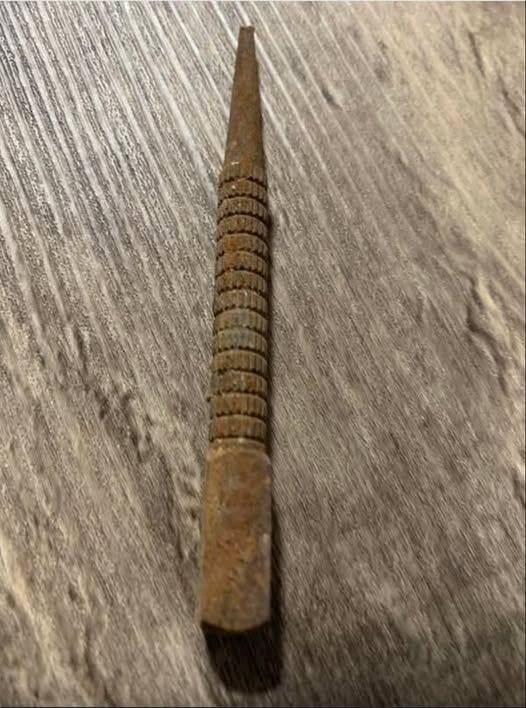Sometimes, you come across an item that makes you pause, tilt your head, and wonder, What on earth is this thing? It’s in those curious moments that the internet becomes your best friend—and if you’ve stumbled across a humble-looking metal rod and wondered what it’s for, you’re in the right place,
because we’re about to uncover the secrets of one of the unsung heroes of the construction world: the nail punch. Often overlooked in the shiny world of power tools, this unassuming device has a fascinating history and plays a vital role in making woodwork look seamless and refined.
Dating back to ancient times when early humans used chisels and stones to craft tools and clothing, the nail punch—or nail set—evolved from the need for smooth, polished finishes. This small tool is designed to drive nail heads just below the surface of wood, a technique essential for clean aesthetics and protection against wear. The basic idea? Place the pointed tip on the nail, strike the flat end with a hammer, and voilà—the nail disappears beneath the surface. Fill the tiny dent with putty, and the result is a smooth, unbroken wooden finish. What started as a crude, handmade implement has evolved into a precision instrument with ergonomic grips, high-carbon steel builds, and even spring-loaded or automatic versions.
In a world filled with flashy battery-powered tools, the nail punch remains refreshingly simple—and yet, incredibly vital. Carpenters, woodworkers, and DIYers alike rely on it for projects where detail matters: think fine cabinetry, baseboards, trim, or furniture restoration. It’s not just about hiding nails—it’s about showcasing craftsmanship. Whether you’re a weekend hobbyist or a master carpenter, the nail punch proves that sometimes, the smallest tools leave the biggest impression. So next time you see that modest metal rod in your toolbox, remember—you’re holding a legacy of precision and purpose.
